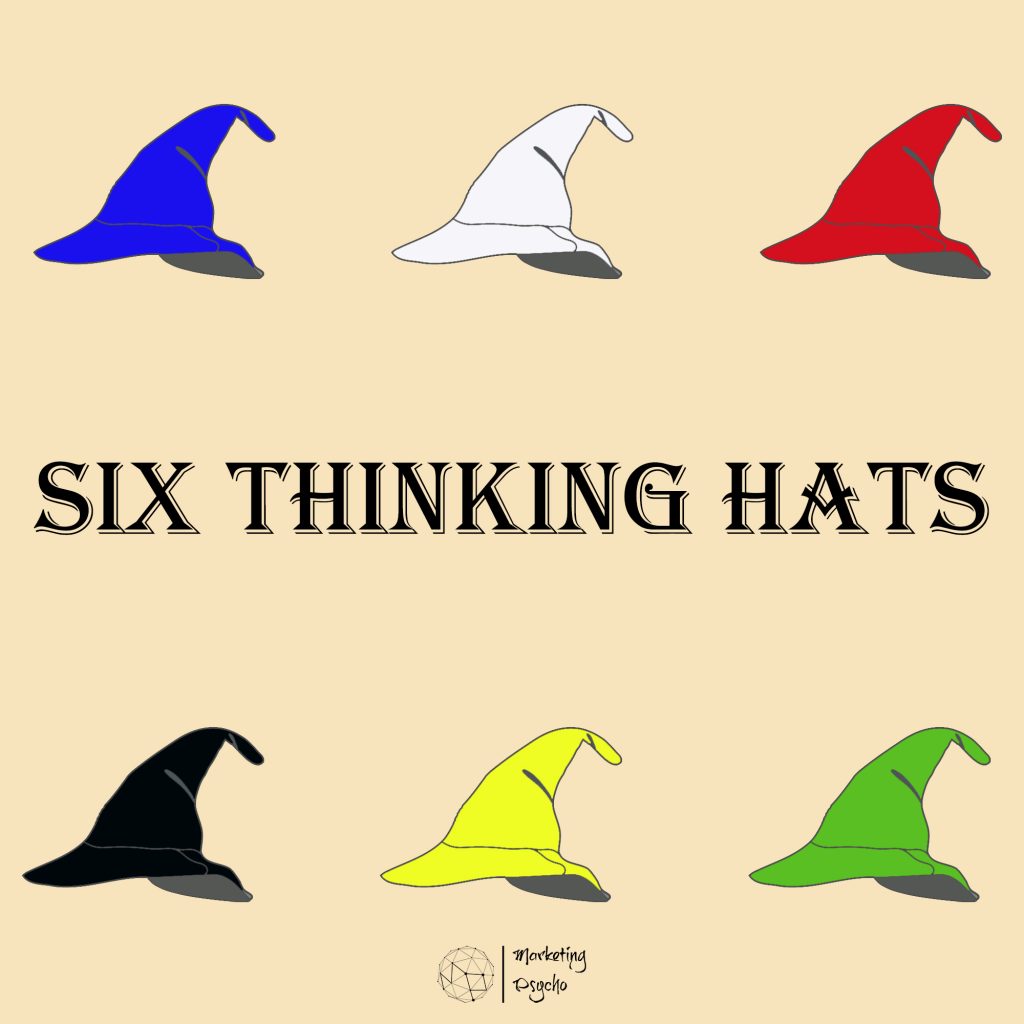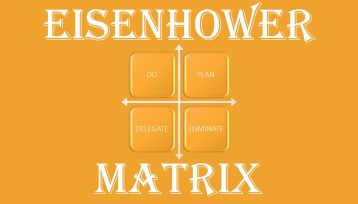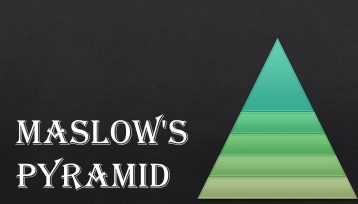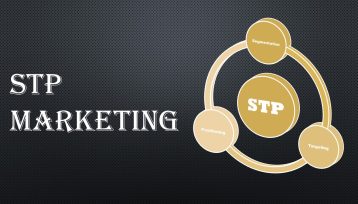Six Thinking Hats is a technique for organizing the thinking process, which allows you to make the most productive decision by considering the problem from six different sides. This approach was proposed by Edward de Bono (1933-2021), the creator of the term “lateral thinking”, and described by him in the book Six Thinking Hats in 1985.
In accordance with this methodology, Edward de Bono advises considering any task with the help of six color hats: blue, white, red, black, yellow, and green. Each hat corresponds to a separate kind of thinking. To see and evaluate the situation as a whole, it is necessary to apply all kinds of hats, otherwise, the picture will not be complete, and, accordingly, the decision made will not be optimal.
So let’s look at what is hidden under each hat.
Blue Hat
Control, coordination, management. Hat functions: defining the problem, setting goals and deadlines, organizing the rest of the hats, and summing up. The blue hat helps to focus on the problem and does not allow you to deviate from the planned course.
Questions: What is our problem? What are our goals?
White Hat
Facts, data. Hat functions: analysis of available information, assessment, and conclusions. The white hat helps to consider the problem as objectively and neutrally as possible.
Questions: What data do we have? What stage are we at?
Red Hat
True feelings and emotions, inner voice. Hat functions: to express feelings, to be sincere, to focus on emotions. The red hat helps to assess the problem through the perception of the participants, to understand their experiences and worries.
Questions: What feelings do we have? What does our intuition say?

Black Hat
Risks, weaknesses, difficulties. Hat functions: to identify negative views on the problem, assess unforeseen situations, and try to take into account all possible obstacles. The black hat helps to identify the most vulnerable points and be prepared for complications.
Questions: What risks are waiting for us? What pitfalls can we face?
Yellow Hat
Advantages, strengths, benefits. Hat functions: to identify a positive view of the problem, evaluate the arguments in favor of making a decision, and determine positive expectations. The yellow hat helps to understand why something will work and why it will be useful.
Questions: What are our strengths? What are the prospects?
Green Hat
Creativity, unusual ideas. The functions of the hat are to develop the proposed ideas, to find a non-standard approach, and to use any means to activate creative potential. The green hat helps to open up new opportunities for solving problems with the help of extraordinary thinking.
Questions: What can we offer new and non-standard?
The six hats technique can be carried out in the form of a game, using both imaginary hats and real ones. With this method, you will be able to get away from the stereotypical view of the problem and solve it in the most effective way.
You can find more related information in Marketing Strategy section of Marketing Psycho blog.





